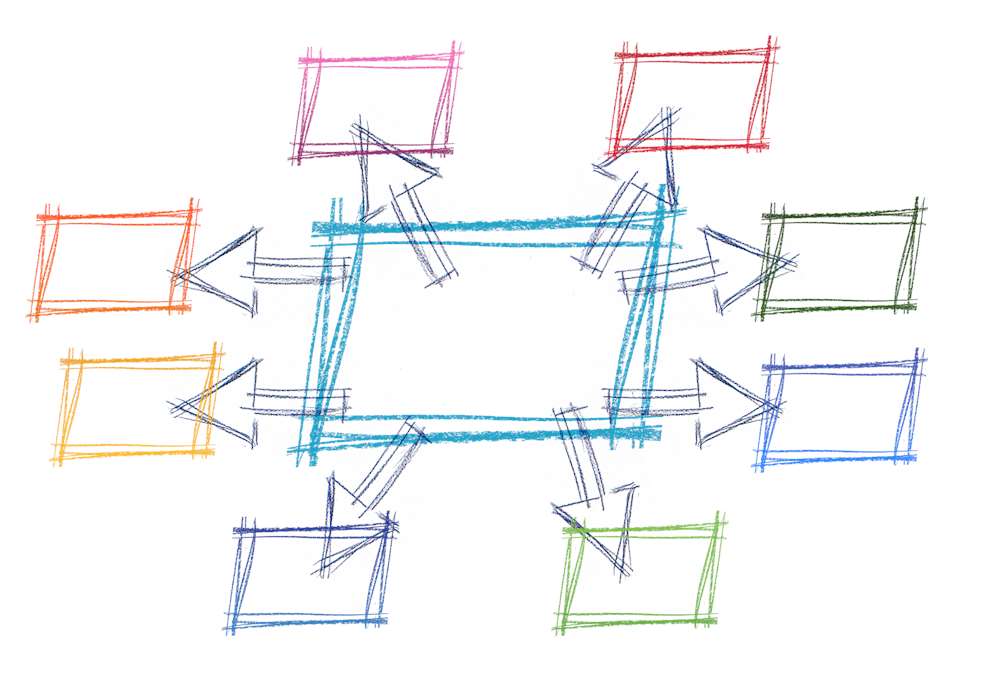- Home
- Business Processes
- Industry Knowledge
- Aerospace Industry
- Automotive Industry
- Banking Domain
- BFSI Industry
- Consumer/ FMCG Industry
- Chemicals Industry
- Engineering & Construction
- Energy Industry
- Education Domain
- Finance Domain
- Hospitality Domain
- Healthcare Industry
- Insurance Domain
- Retail Industry
- Travel and Tourism Domain
- Telecom Industry
- Leadership Skills
- eLearning
- Home
- Business Processes
- General Ledger (Record to Report)
- Driving Business Efficiency through Divisions and Departments
Driving Business Efficiency through Divisions and Departments
In case of a multi-divisional organizational structure, there is one parent company, or head-office. And that parent owns smaller departments, under the same brand name. Dividing the firm, into several self-contained, autonomous units, provides the optimal level of centralization, in a company.
What do we mean by a department or a division, in context of organizational structures?
The divisions are nothing, but distinct parts, of the same business.
A division of a business or "business division" is one of the parts, into which a business, organization, or company is divided.
Divisions are self-contained units.
The divisional structure consists of self-contained divisions.
Divisions can be defined for different business areas, research units, or administrative offices.
They might have different appointed managers.
And, Divisions may have programmatic, operational, fiscal and budgetary responsibility, for a specific set of business activities, and projects
What is the Relationship between, legal entity and divisions?
A department or division can be viewed as the intersection between a legal entity and a business unit.
In a simplistic scenario, all divisions are part of the same company.
The company itself is legally responsible, for all of the obligations and debts of the divisions.
However, this relationship, may change, in case of large organizations.
In that case, a business division may include, one or many subsidiaries as well.
Initially, in such companies, business units which are part of the same legal entity, are setup to operate in divisions.
Later with growth, these divisions become subsidiaries, and also independent legal entities.
In such cases, various parts of the business may be run by different subsidiaries.
Each subsidiary in such a case is a separate legal entity, owned by the primary business, or by another subsidiary in the hierarchy.
Divisions are also used by management, as a tool for segregation and delegation of responsibilities, to various parts of the business.
Divisions also help the management, in operational control.
Let us understand how they help management in these objectives.
Department as a tool for, Segregation & Delegation.
In case of a multi-divisional organizational structure, there is one parent company, or head-office.
And that parent owns smaller departments, under the same brand name.
Dividing the firm, into several self-contained, autonomous units, provides the optimal level of centralization, in a company.
Although, the whole organization is controlled by central management.
But most decisions are left to autonomous divisions or departments.
Central management provides the overall direction of the firm.
While each division operates autonomously to cater to its own needs.
It is held accountable for its own profits, and can remain productive, even if the other divisions fail.
Divisions as a tool for operational control
A division is a collection of functions, which manage similar types of activities, like the one which produce a product.
They are generally used as cost accumulators and also for revenue recognition.
They may have profit and loss responsibility, and may consist of a group of cost centers.
Departments can also serve as profit centers, managing their own profitability.
In that case, they utilize a budget plan to compete, and operate, as a separate business profit center.
What are some of the basis for creating divisions?
Divisional structure could be based on, many external or internal parameters, based on the management needs.
Some commonly used parameters across industry are, product, customer segment, geographical locations etc.
For example, in case of differentiation by products, each division is responsible for certain product, and has its own resources, such as finance, marketing, warehouse, maintenance etc.
Let us look at some common methods of differentiation, for creating divisions.
First could be, By Product; For example separate divisions are created, to manage different product or service lines.
Another way is to differentiate By Geographical Location; Example is the regional offices created by companies, like Northern Division, Southern division etc.
One can also define divisions by the Type of Customer; For example in case of a bank, different divisions are created to take care of retail business, wealth management and corporate clients.
And divisions can also be created by different Processes; for example in case of a hospital, one can have a division managing admissions, another for surgery, and one for discharge processes, etc.
Related Links
You May Also Like
-
In this article we will discuss various types of "Management Entities". Various types of operational units, are created by management, to effectively run, manage and control their business. Different types of functional units, and divisional units, are widely used across industry.
-
Multi Currency - Functional & Foriegn
Currency is the generally accepted form of money that is issued by a government and circulated within an economy. Accountants use different terms in the context of currency such as functional currency, accounting currency, foreign currency, and transactional currency. Are they the same or different and why we have so many terms? Read this article to learn currency concepts.
-
The general ledger is the central repository of all accounting information in an automated accounting world. Summarized data from various sub-ledgers are posted to GL that eventually helps in the creation of financial reports. Read more to understand the role and benefits of an effective general ledger system in automated accounting systems and ERPs.
-
Explore the concept of journal reversals and understand the business scenarios in which users may need to reverse the accounting entries that have been already entered into the system. Understand the common sources of errors resulting in the reversal of entries and learn how to correct them. Discuss the reversal of adjustment entries and the reversal functionalities in ERPs.
-
Introduction to Organizational Structures
Organizations are systems of some interacting components. Levitt (1965) sets out a basic framework for understanding organizations. This framework emphasizes four major internal components such as: task, people, technology, and structure. The task of the organization is its mission, purpose or goal for existence. The people are the human resources of the organization.
-
An allocation is a process of shifting overhead costs to cost objects, using a rational basis of allotment. Understand what is the meaning of allocation in the accounting context and how defining mass allocations simplifies the process of allocating overheads to various accounting segments. Explore types of allocations and see some practical examples of mass allocations in real business situations.
-
Legal Structures for Multinational Companies
A multinational company generally has offices and/or factories in different countries and a centralized head office where they coordinate global management. A multinational company (MNC)is a corporate organization that owns or controls the production of goods or services in at least one country other than its home country.
-
Defining Organizational Hierarchies
A hierarchy is an ordered series of related objects. You can relate hierarchy with “pyramid” - where each step of the pyramid is subordinate to the one above it. One can use drill up or down to perform multi-dimensional analysis with a hierarchy. Multi-dimensional analysis uses dimension objects organized in a meaningful order and allows users to observe data from various viewpoints.
-
There are two commonly used methods of accounting - Cash Basis and the Accruals Basis. Understand the difference between accruals and reversals. Recap the earlier discussion we had on accruals and reversals and see the comparison between these two different but related accounting concepts. Understand how the action of accruing results in reversals subsequently in the accounting cycle.
-
Driving Business Efficiency through Divisions and Departments
In case of a multi-divisional organizational structure, there is one parent company, or head-office. And that parent owns smaller departments, under the same brand name. Dividing the firm, into several self-contained, autonomous units, provides the optimal level of centralization, in a company.
Explore Our Free Training Articles or
Sign Up to Start With Our eLearning Courses

About Us
Learning
© 2023 TechnoFunc, All Rights Reserved










